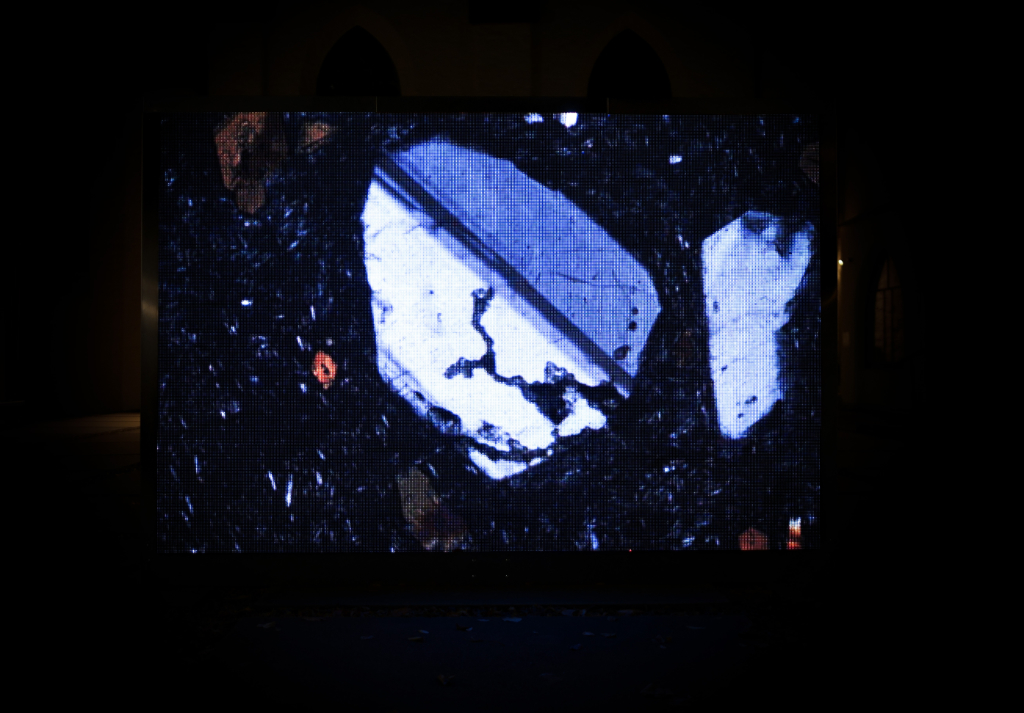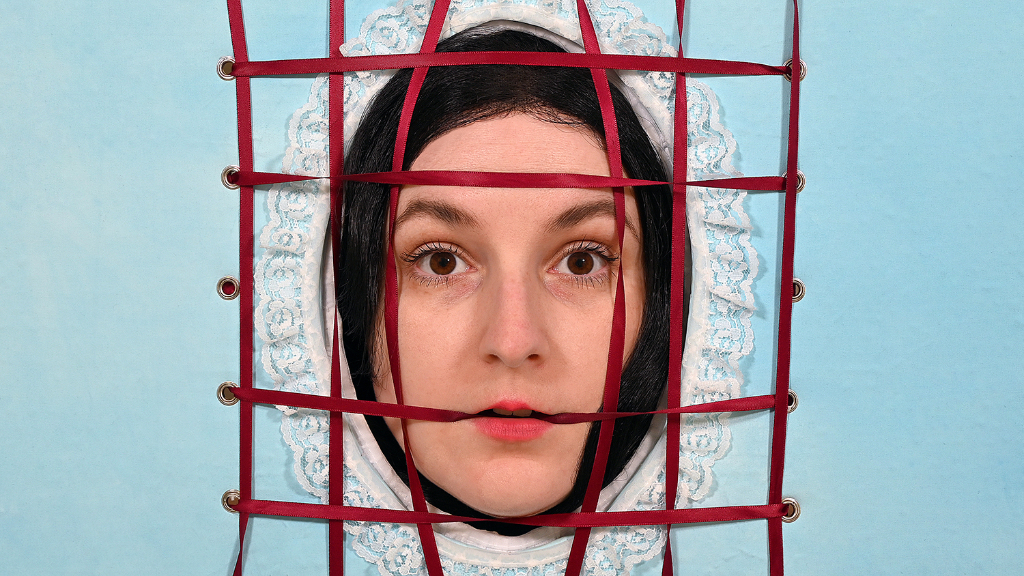Interview by Lidia Ratoi

Shall every age have a style of its own, and our age alone be denied one? Having to define it, though, one term comes to mind: multidisciplinary. But even in this borderless age of fluidity, some stand out. Through the very differentiated disciplines that they bring together. Through the quality of the work. Through the unique results. Or through all of the above. Nick Rothwell is one such creature.
Nick Rothwell is a composer, performer, software architect, programmer and sound artist. Nick Rothwell is an artist. He is many things, but my personal favourite – Nick Rothwell is a giver – he gives experiences. An experience that makes you look up from your phone and be present. Feel. Live.
In one of his latest works, he’s provided with a code sequence for Autobiography, a dance piece by acclaimed dancer and choreographer Wayne McGregor. The piece is very much in symbiosis with Rothwell’s persona since it brings together various postures of the humanoid experience: the body’s movement, the variation of light, the feelings of vulnerability intertwined with those of power, and the randomness between precise parameters.
Autobiography was one of the highlights of this year’s edition of Unsound Krákow. For it, Studio Wayne McGregor presented a reduced version of the show with music from Jlin. The project is not the first collaboration between McGregor and Rothwell, and the team always manages to bring together human consciousness through movement – using a coding machine to achieve that.
Autobiography is based on McGregor’s DNA, establishing an alphabet of coding parameters from this. This resulted in 23 different possible scenarios, all perfectly calibrated. The order of the stories can be altered randomly, thus iterating countlessly. This random but controlled, Dada-inspired psychedelic process refreshes the current dance paradigm and frees the body from traditional constraints.
But the human machine versus (or featuring) the robot machine is something we can witness recursively in Rothwell’s work. In works such as Trespass, the artist/coder explores how this relationship evolves in a scenario of “violation” – trespassing is, by definition, the act of entering a space without permission. The whole piece evokes this feeling of defenselessness and anxiety, which is very suggestive, with humans and robots defending themselves.
Being experienced in such different fields, Nick Rothwell has gained insight into various postures of man’s mind and has managed to do something few of us do – understand humans. And by understanding us, he can offer us new states of our being that we were perhaps unaware we can reach.

You are a composer, performer, software architect, programmer and sound artist interested in body expressions. For those unfamiliar with your background, could you please tell us a little bit more? How and when did the fascination with these disciplines come up?
Roughly speaking, one at a time… my training (PhD) is as a Computer Scientist. Still, despite having no formal musical knowledge or training, I’ve always had a deep interest in music, so I started to deeply explore music theory and synthesis as I was wrapping up my thesis. A few years later, I accidentally stumbled across a live performance of a dance piece by Rosemary Butcher, which hooked me on dance. What could be better than formal rule systems for live site-specific art performances?
You have a long collaborative relationship with Wayne McGregor. What was that attracted you to his work (or dance), and how did you envision you could contribute to it?
I think it’s all about the process – it’s clear that Wayne thinks deeply about the nature of what he’s doing and is reaching out to other disciplines as part of that investigation and the quest for understanding. Choreography and software are very similar in some ways: establishing sets of rules and constraints in a domain and then exercising the system that results in exploring and refining the outcomes. Programming is still as much an art as a science, which is a large part of its appeal.
At Unsound, Studio Wayne McGregor is presenting Autobiography Edits, a condensed version of Autobiography, a work based on the sequencing of McGregor’s genome, for which you have developed the algorithm which determines the performance order. What was the intellectual process behind the development of the algorithm?
It’s basically a constrained system. The 23 choreographic sections can be shuffled into many different combinations. Still, Wayne placed several constraints on the process of how the sections could be laid out and positioned relative to one another. It was a technical challenge only to generate “correct” combinations since doing so by trial and error (discarding all “incorrect” combinations until an acceptable one comes along) would have been extremely inefficient.
So there’s a process of mutating any combination into a definitive “correct” form. And whenever the system has to make an arbitrary choice at any stage of the process, it reads from Wayne’s genome sequence to determine the outcome. We’re rolling dice, but the dice are made of DNA.
Which has been the most challenging project you developed together and why?
Becoming was probably the most complex. Not only did the software have to be designed and built (with Marc Downie leading on the design of a “virtual” additional dancer to Company Wayne McGregor), but we had to build a network interface (the dancer was also a web server), spec. All the hardware, build two identical systems (two virtual dancers) and install one for unattended running at the Wellcome Collection while the other performed with the human dancers in rehearsals. One of the dancers was rather prone to overheating.
Considering all the new technological advancements in computational sciences, are there any territories you feel you still need to explore or take your work into?
I’m interested in bringing technology to bear in a creative process and then taking it away again when the work is made. Dance (and music) can become interesting when they’ve been mediated by a technological tool that isn’t visible in the result (assuming the tool is engaged creatively).
What essence is present in such works that wouldn’t be there if no technology was involved at all? How does an observer perceive that? How much does it permanently change the creative process of the artist?
What is your chief enemy of creativity?
Unconstrained choice.
You couldn’t live without…
Two things immediately come to mind:
(i) Memory. Much of what I do creatively taps into childhood ideas and experiences, which become precious the further away they get. Memories – especially those filtered by temporal distance – are extremely personal, and it’s interesting to abstract and recontextualises these in a modern setting.
(ii) Collaborators. The intersection of creative processes is always interesting and worth the time and effort that’s often required to make it work.





